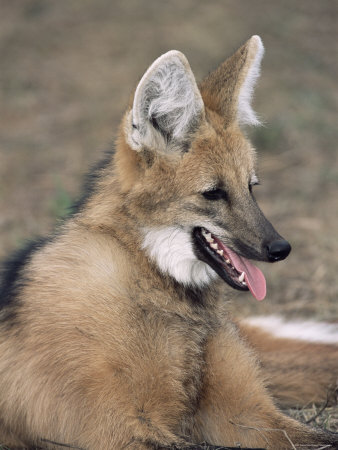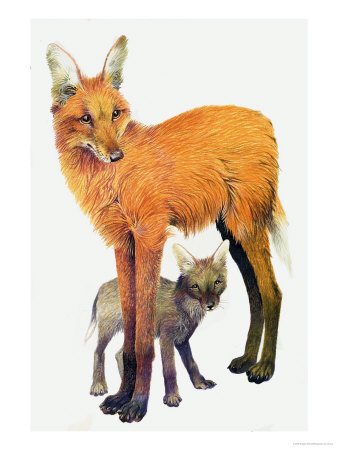Despite being only distantly related to domestic dogs, Maned Wolves share a health problem with some Dalmatians: they get kidney stones.
“Maned Wolves suffer from a serious and possibly hereditary metabolic flaw, which may result in a syndrome called cystinuria, a failure of the renal system to absorb the amino acid cystine,” according to Louise Emmons, a research associate at the National Museum of Natural History. “Cystine is excreted in the wolves' urine, and may cause crystals to form in their kidneys and bladder, which can cause death from kidney failure or blockages in the urinary tract.”
That is not the only thing that threatens this rare animal.
Maned wolves live on insects, small mammals and reptiles, birds, birds' eggs and vegetation. About half its diet consists of fruit. They use their large ears to detect the moment of prey such as mice, guinea pigs and small lizards, which they catch by pouncing on them in the same manner as a fox. Like foxes, they have a strong odor. They do not compete with people for food and, aside from the occasional chicken, newborn lamb or piglet, do not eat livestock, since their jaws and teeth are small.
Since their fur, which smells like a skunk's, has no commercial value, the main threat to their survival is habitat destruction from logging, slash-and-burn cultivation and draining marshlands to create more farmland. Sadly, it is also hunted for sport, even though the meat and pelt are of no value. The maned wolf, once found in many South American countries, is now completely gone from Uruguay and the southern part of Argentina. It is classed as Endangered in several countries.
It is thought there are as few as 1,500 maned wolves left in the wild.











 Versatile Nova Scotia Duck Tolling Retrieverson 08/02/2014
Versatile Nova Scotia Duck Tolling Retrieverson 08/02/2014
 Should You Spay or Neuter Your Puppy?on 08/12/2014
Should You Spay or Neuter Your Puppy?on 08/12/2014
 Horse Racing History: the Preakness Stakeson 05/15/2014
Horse Racing History: the Preakness Stakeson 05/15/2014
 Dinosaurs Will Be On Display in Trenton, Ontario, Canadaon 07/29/2013
Dinosaurs Will Be On Display in Trenton, Ontario, Canadaon 07/29/2013



Comments
Very interesting. Didn't know that much about them. It's sad as with other wild animals people can't get along and leave alone such a unique creature!